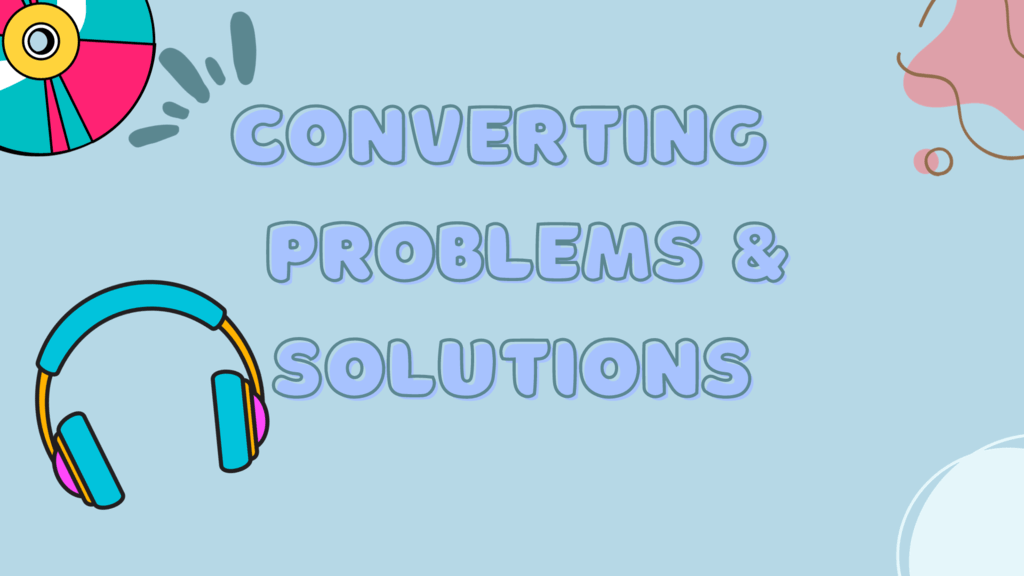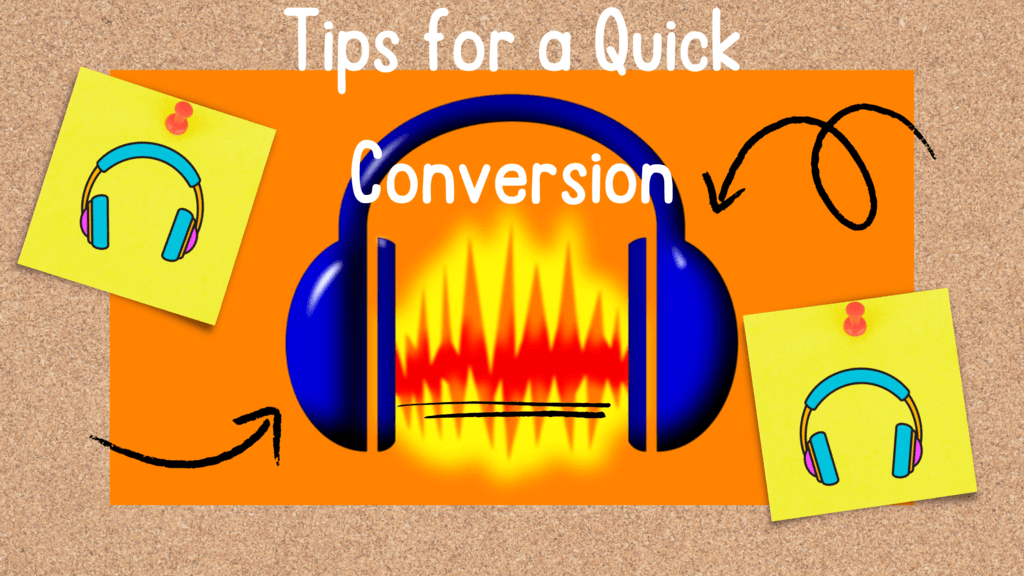Convert Audacity Files to MP3 Guide: It’s not easy to share or play Audacity recordings because they’re not in the standard MP3 format. You’re not by yourself. Many people have this problem, but there’s an easy way to fix it.
Imagine how easy it would be to turn your Audacity files into MP3s, which would work on almost any media player or device. This Audacityguide article shows you the fastest and easiest way to convert your Audacity projects into MP3 files so your music can be shared and accessed in a format accepted worldwide.
We know how important your time is and how important good audio files are. Because of this, our method makes the process easier and keeps the quality of your original recordings. You’ll find this guide very helpful whether you’re a podcaster, musician, or someone who loves making audio content.
Read on how to change your Audacity files to MP3 files easily. Say goodbye to problems with compatibility and hello to a world where your music can easily reach everyone, everywhere.
On this page, you’ll learn about the following:
Step-by-Step Guide: How to Convert Audacity Files to MP3

An easy way to convert Audacity files to MP3 lets you share and enjoy your music on various devices and platforms. To make sure the conversion goes smoothly, follow these step-by-step instructions, which include choosing the right settings and options in Audacity:
- Open your Audacity project.
You can change an audio file to an MP3 by opening the Audacity project that has it. If this is the start of a new project, choose the audio file you want to use by going to “File” > “Import” > “Audio…”
- If you want to, edit and prepare your audio.
Make any changes or improvements to your audio in Audacity if necessary. Audacity has tools and effects that you can use to trim, clean up, or improve your audio files.
- Save your sound file.
If you want to convert your audio, go to the “File” menu and choose “Export” > “Export as MP3.”
- Find the LAME Library.
To encode MP3 files, Audacity needs the LAME library. Audacity will tell you where to find the LAME library if you haven’t already. If you need to, you can get the LAME library from the Audacity website and install it.
- Set up the settings for exporting MP3s
The MP3 export settings dialogue box will appear after you make sure Audacity can find the LAME library. To set these settings, follow these steps:
Bit Rate: Choose the bit rate you want for your MP3 file. The sound quality is better at higher bit rates, but the files are bigger. Most files have bit rates between 128 kbps (standard quality) and 320 kbps (near CD quality). Pick the one that works best for you.
Channels: Pick how many audio channels you want. Most sound is stereo, which means it has two channels, one for left and one for right. To get a mono sound, choose “1 (Mono).”
Quality: You can pick from different quality settings, like “Insane Quality” or “Medium Quality.” These presets change encoding settings to find the best balance between file size and sound quality. Most of the time, “standard quality” or “medium quality” is fine for everyday use. - Set metadata (not required).
You can add the title, artist, album, and other useful information to your MP3 file. You don’t have to do this step, but it can help you organize and find your audio files.
- Begin the conversion.
Click the “Save” button to start the conversion once you’re happy with the settings. Audacity will convert your sound file to MP3 format.
- Save the MP3 file.
Finally, pick a place on your computer to save the MP3 file and give it a name that makes sense. After that, click “Save” to finish.
Excellent work! You’ve successfully changed your Audacity file to an MP3 file. It can be played on and shared on many devices and platforms.
Batch Conversion
It saves time to convert several Audacity files to MP3 at once, especially when you have a lot of audio files to work with. You can save time and effort by following this step-by-step guide on how to do batch conversion:
Step 1: Put your Audacity files in order.
It’s important to organize the Audacity files you want to convert before you start the batch conversion process. It will be easier to find and choose them later if you put them in a special folder on your computer.
Step 2: Open Audacity.
Start by opening Audacity, a flexible software for editing audio that lets you work with WAV and other audio formats.
Step 3: Open the preferences menu in Audacity.
In Audacity, go to the “Edit” menu and choose “Preferences.” This step is very important for setting up Audacity to find and work on multiple files at the same time.
Step 4: Set the preferences for the file format
Look for “File Formats” in the Preferences window and click on it. When you export files, pick “Use custom mix.” If you want to import uncompressed audio, choose “Show warning and require confirmation.”
When you open a file, choose “Show warning and require confirmation.” These settings ensure that Audacity asks you to confirm when working with multiple files so that you don’t accidentally overwrite them or make mistakes.
Step 5: Set the settings for exporting to MP3
To set up your MP3 export settings, go to “File” > “Export” > “Export as MP3.” For each file you want to convert, set the bit rate, channels, quality, and any other metadata options you want. Just click “OK” to keep these changes.
Step 6: Choose More Than One Audacity File
When you get back to Audacity, go to “File” > “Open” > “Files.” Find the folder where you put the Audacity files you want to convert. If you hold down the Ctrl (Windows) or Command (Mac) key while clicking on each file, you can select them all simultaneously.
Step 7: Confirm and start the batch conversion.
Select all the Audacity files you want to change, then click “Open.” Audacity will ask you to confirm the settings you set up earlier for the conversion. Ensure everything is set up correctly, and click “OK” to start the batch conversion.
Step 8: Keep an eye on progress
The chosen Audacity files will be converted to MP3 format one by one by Audacity. In the status bar, you can see how each conversion is going. The time it takes to do this may depend on how many files and how long they are.
Step 9: Check and save your work.
Once all the files have been converted successfully, please take a moment to check the MP3 files to make sure they meet your quality and content standards.
Step 10: Save the MP3 files.
Pick a place on your computer to save the MP3 files, and give them names that make sense. Just click “Save” to finish the batch conversion.
You’ve now successfully changed several Audacity files to MP3 at once, which saved you a lot of time and work. This simplified method works especially well when working with large audio collections or projects that need to convert a lot of audio at once.
How to Fix Common Problems When Converting Audacity to MP3

It can be easy to convert Audacity files to MP3, but as with any technology, sometimes it doesn’t work right. Users may run into the following problems during the conversion process, and here’s how to fix them:
| Issues | Solutions |
|---|---|
| LAME Library Not Found | You can get the LAME library from the Audacity website and install it by following the on-screen instructions. |
| The export settings are wrong | Before you start the conversion, ensure you have the right bit rate, channels, and quality settings. |
| Writing over files | Turn on confirmation dialogues and warnings in Audacity’s preferences. Before batch converting, you should always make a copy of your original files. |
| Audio formats aren’t supported | Make sure the audio files you want to convert are in a format that can be read by the converter, like WAV or FLAC. |
| Metadata that doesn’t match up | If you add metadata to your MP3 files, like title, artist, album, etc., ensure it stays the same for all your converted files. |
| Limits on system resources | Try closing any programs you don’t need, freeing up disc space, and ensuring your system meets Audacity’s requirements. |
| Concerns about sound quality | Pick the right bitrate to find a good balance between file size and sound quality. |
| Characters in file names that aren’t supported | Don’t use special characters or symbols in file names. Use only letters, numbers, and underscores to ensure processing goes smoothly. |
Best Practices for Quick and Easy MP3 Conversion

The MP3 conversion process needs to go as smoothly and quickly as possible to maintain the audio quality and save time. Here is a short list of the best ways to make sure the conversion goes smoothly:
- Get your files in order: Before you begin, put your Audacity files in a folder just for them so they are easy to find during the conversion.
- Put the LAME Library in place: Ensure Audacity can find the library to encode MP3s. You can get it from the Audacity website and install it if necessary.
- Set up the MP3 settings: Make sure the bit rate, channels, quality, and metadata are set correctly for MP3 export. These settings should give you the quality and size of the file you want.
- Confirm your choices: You can change the file format settings in Audacity’s preferences to avoid overwriting or making mistakes when working with multiple files. Allow confirmations and warnings.
- Conversion in Groups: Use Audacity’s batch conversion feature to convert many files simultaneously and save time and work. Choose more than one Audacity file at once and make sure the settings are correct for each one.
By following these best practices, you can speed up converting audio files to MP3, keep the audio quality, and easily organize your audio files.
FAQs
Yes, you need the most recent version of Audacity and the LAME MP3 encoder, which lets you change files to MP3.
You can get the LAME MP3 encoder from the Audacity website. Open Audacity, go to Preferences and link the LAME library file under the “Libraries” tab to make MP3 export possible.
Both Windows and Mac computers can change Audacity files to MP3 files. On both platforms, the process is the same.
Some audio quality may be lost when you convert to MP3. You can pick a higher bitrate during conversion to keep the quality as high as possible.
Conclusion
Our complete guide makes Audacity to MP3 easier than ever. If you’re an audiophile musician or want to share your audio creations, this guide will show you how to convert Audacity files to MP3.
We’ve discussed MP3’s benefits, such as its compatibility with all devices and its compression algorithm for streaming and storing. Change bitrates to find the best file size-sound quality ratio, making your audio content stand out.
Our easy-to-follow conversion process from Audacity to MP3 and troubleshooting section ensure a smooth conversion. When you have many audio files to convert, our batch conversion method saves time and effort.
For more Audacity guides and information, you may visit AudacityGuide. You can find more information here if you are searching for the best Audacity Plugins to enhance your audio before you convert it to MP3. Enter the world of audio magic, enjoy MP3’s flexibility, and share your sound creations. You must convert Audacity to MP3 so your music reaches more listeners!